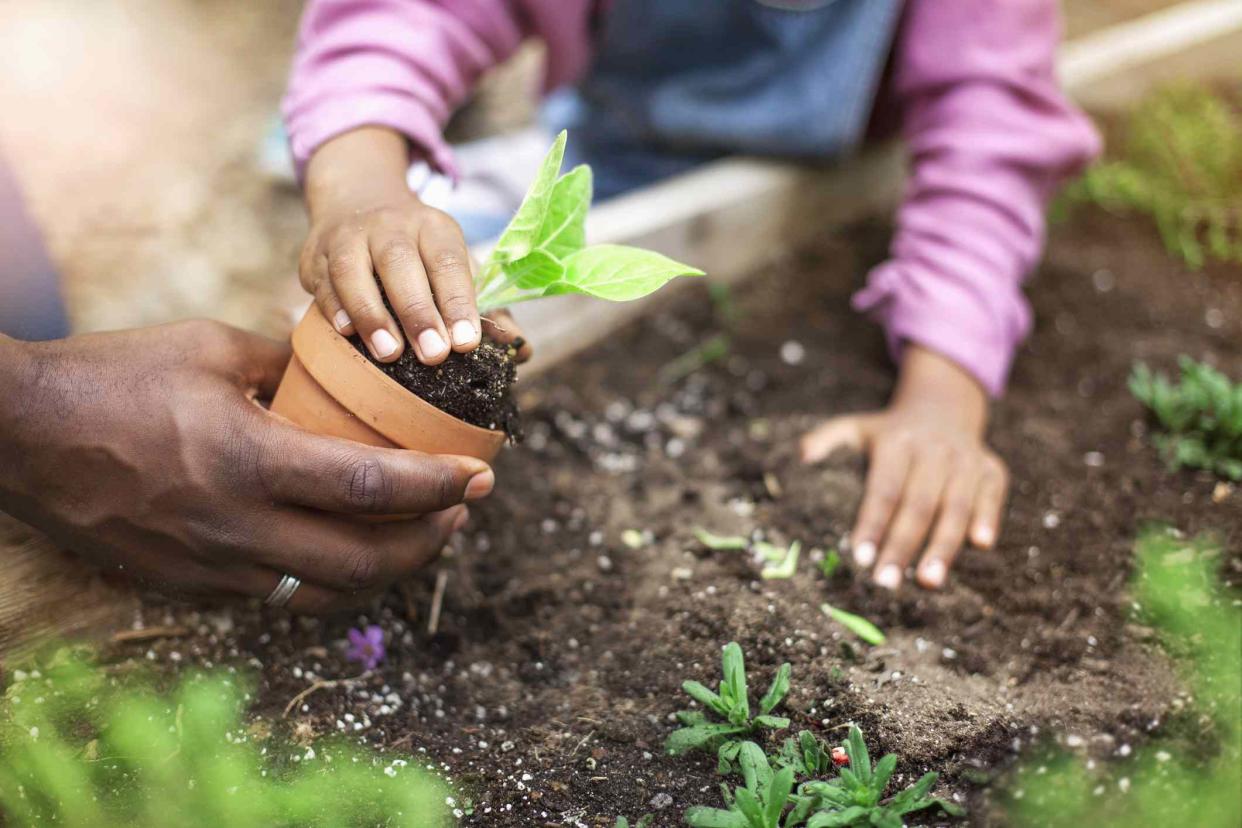Can You Reuse Potting Soil?

FangXiaNuo / Getty Images
Whether you’re sprucing up your spring flowers or planting this season’s harvest, potting soil is a necessity to guarantee your plants will get the nutrients they need to thrive. Made from in-ground soil, potting soil contains dirt, just like you’d find in your yard. It has mineral elements, including sand, clay, and loam, but is often fortified with organic products to increase its nutritional value.
And since potting soil is typically used for in-ground potting, which may tempt you to reuse it year after year. Not so fast. The added nutrients are critical to make sure you get the most out of your potting soil, and those nutrients will deplete as time goes on.
“Most potting soil is best within two years, so I recommend keeping track of how long it’s been since you purchased it," says Rebecca Sears, CMO & Resident Green Thumb at Ferry-Morse. However, all is not lost just because your potting soil has celebrated its second anniversary. “If your potting soil has passed the two-year mark, you can still make use out of it by amending it or adding it to raised beds for support or sprinkling it on flower beds,” says Sears.
The ability to reuse potting soil each season can help you save money and a trip to the garden center, but there are a few things to keep in mind about reusing potting soil.
Rebecca Sears is the CMO & Resident Green Thumb at Ferry-Morse.
Charlotte Ekker Wiggins is a Master Gardener and author.
How Do You Reuse Potting Soil?
Since potting soil does lose nutrients as it’s used, Charlotte Ekker Wiggins, an author and Master Gardener, recommends mixing old soil with new soil to refresh it before reusing.
“One of the easiest ways to reuse potting soil is to add it to existing flower beds and compost bins. Mixing it with new, outside soil will help refresh it,” says Wiggins.
However, she’s careful to note that potting soil should never be allowed to dry out between uses. If you plan on using soil from one summer to the next spring, leave the potting soil outside—don’t bag it up and bring it into a potting shed or garage.
“When not planted, keep potting soil moist. I leave potted soil outside over winter so it can get rain and snow to help refresh it," says Wiggins.
Should You Add Nutrients to Recycled Potting Soil?
When your plants are thriving—and maybe even when they’re not—they’re using up the precious nutrients that exist within the soil, and those need to be replenished before the soil can be successfully reused.
“I recommend using an all-purpose, slow-release organic plant food that contains all of the macro-nutrients plants need throughout the season," says Sears.
This can mean something as simple as adding plant food, compost, or fertilizer to the soil, or you can use it as an opportunity to put on your scientist hat. Sears explains that, after sterilizing, you should test the pH level of the potting soil to determine whether it’s returned to a neutral state.
“Any level between 6.5 and 7.5 is ideal. You can easily determine the pH level of your reused soil within minutes with a soil test kit,” says Sears. If it’s too low, add soil amendments with more nutrients. However, if it’s too high, add elemental sulfur, aluminum sulfate, or sulfuric acid.
What Types of Plants Should You Use in Recycled Potting Soil?
Because different types of plants rely on different nutrients in the soil, rotating your plants each year can also help create an environment where they will thrive and the potting soil can be recycled annually.
“Impatiens and Snackabelle peppers, for example, will allow you to reuse the potting soil from flowers one year, then peppers the next,” says Sears.
What If There Are Pests in the Soil?
If you’re not sure if the soil has pests and diseases, don’t fret but also, don’t use it right away. Put the soil through a sterilization process before using it for your newest plants. Wiggins recommends putting the possibly-contaminated soil in a black bag, closing it up tightly, and leaving it in the sun for four to six weeks.
“The heat built up will kill any unwanted hitchhikers," Wiggins says.
You could also bake the soil at 180 degrees in a foil-covered oven safe pan for half an hour. Keep it covered until it cools, but Wiggins warns that might leave your kitchen with an earthy smell.
With the cool, decontaminated soil in hand, Wiggins recommends adding compost to reintroduce microbes, using one part compost to three to four parts soil, creating a recycled potting soil that will help you flex your green thumb.

